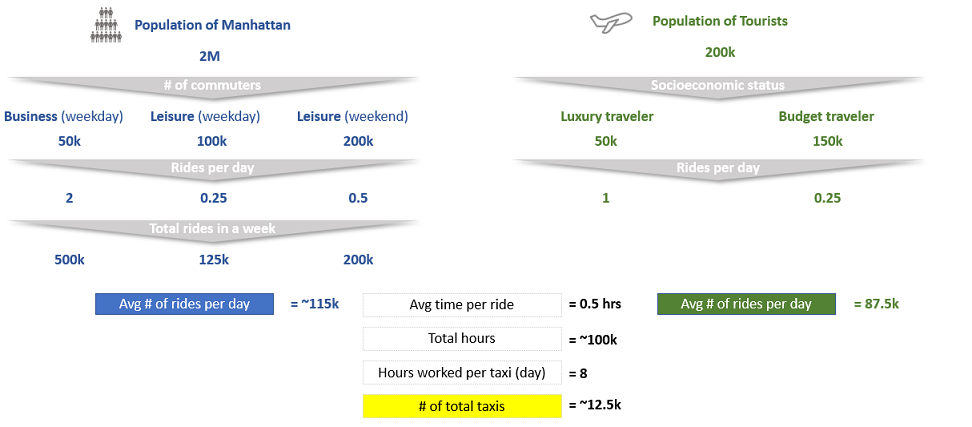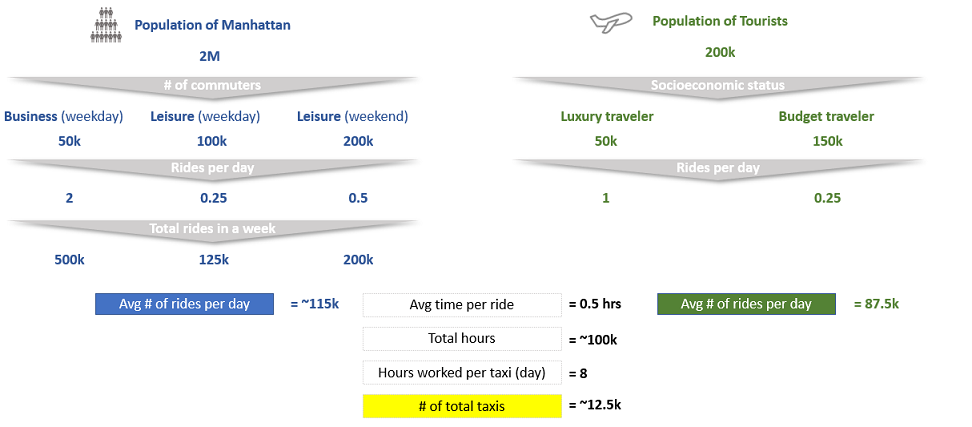Learn the case interview basics, practice with 200+ cases, and benefit from extensive test materials, and interactive self-study tools.
An entrepreneur has come to you looking to disrupt the taxi industry in NYC. They are interested in determining the number of taxis in Manhattan, in order to understand how large their fleet would need to be to compete. How would you go about determining how many taxis exist in Manhattan?
If the candidate asks, you may clarify the following:
- This is pre ride-hailing technology
- That we are looking for total taxis NOT taxis at any given time. We would like an estimate of the size of the fleet
- Manhattan is 1 of 5 boroughs in NYC
Case Comments
5.7k
Times solved
Intermediate
Difficulty
Do you have questions on this case? Ask our community!





